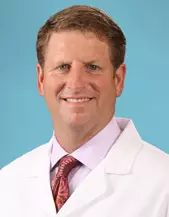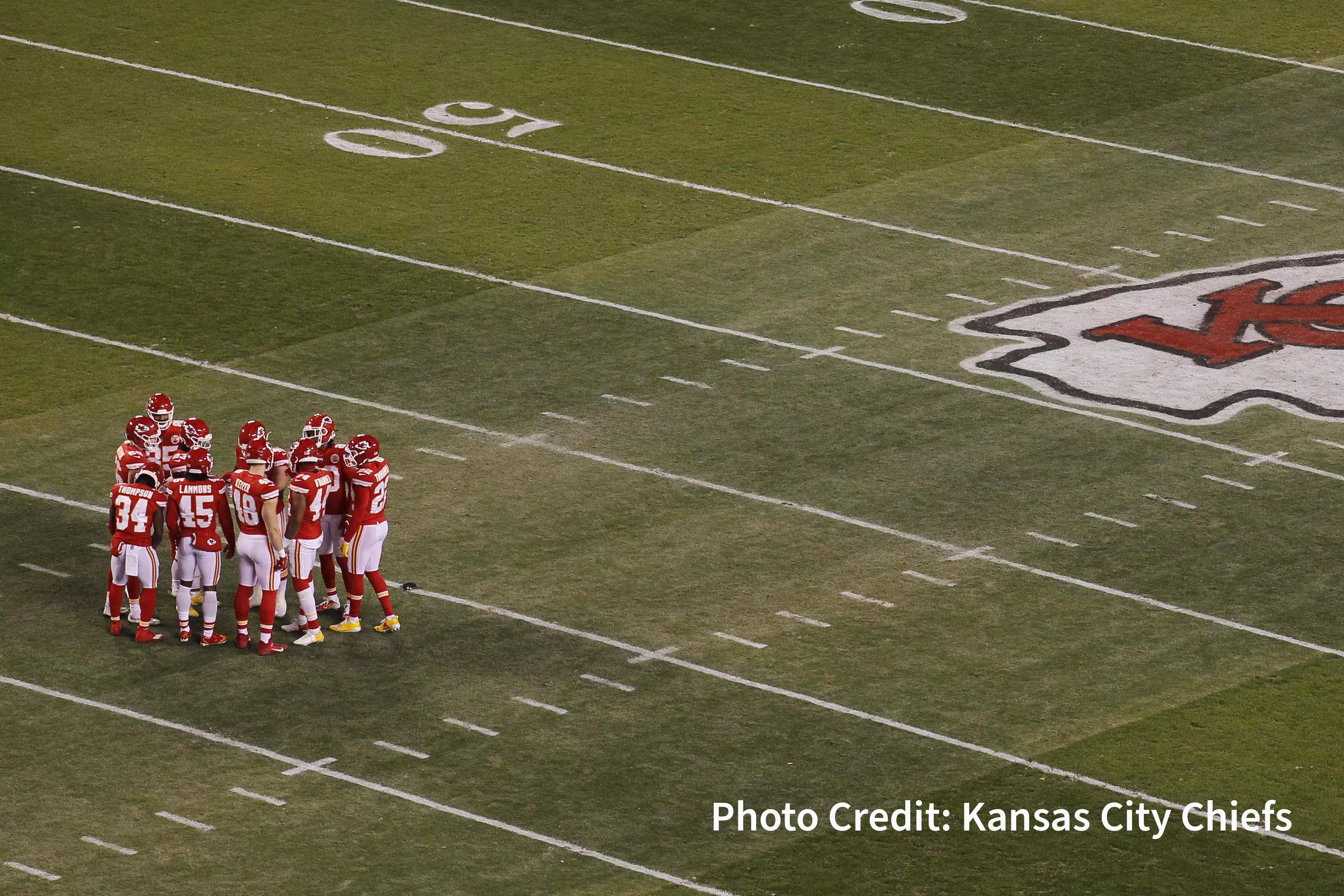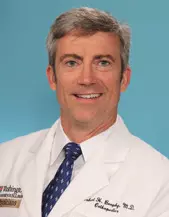November 21, 2022
NFL Medical Committees Focus on Player Health and Safety
There's no question St. Louis is a sports town. We love our pro teams: the St. Louis Blues, Cardinals and the recent Major League Soccer addition, STL CITY Soccer Club (SC).
While we may no longer have a St. Louis-based NFL team, Washington University Orthopedics is still focused on the health and safety of active NFL players.
Safety for All Athletes
In addition to serving as team physicians for the St. Louis Blues and St. Louis CITY SC, Washington University sports medicine specialists serve on NFL research committees, designed to promote and advance the health and safety of NLF players. There are eight committees in all, and each is made up of physicians across the country who come together to assess and analyze injuries, modify equipment and change rules based on injury prevalence.
In the NFL Research and Innovation Committee, they also advise how to incorporate innovative technologies used in other industries, like the US Department of Defense, and source extramural research that has application to football-related health issues.
 Matthew Matava, MD – Washington University sports medicine specialist and chair of the NFL Research and Innovation committee – shares one of the benefits of working on this committee: “The NFL dedicates a tremendous amount financial and human resources towards medical research, including injury epidemiology, biomechanics, equipment and turf science, prevention of neurologic injury, and musculoskeletal clinical research. We’re able to study some of the world’s most elite athletes – and their injuries – and develop new techniques to treat those injuries. And perhaps, more importantly, prevent future injuries.”
Matthew Matava, MD – Washington University sports medicine specialist and chair of the NFL Research and Innovation committee – shares one of the benefits of working on this committee: “The NFL dedicates a tremendous amount financial and human resources towards medical research, including injury epidemiology, biomechanics, equipment and turf science, prevention of neurologic injury, and musculoskeletal clinical research. We’re able to study some of the world’s most elite athletes – and their injuries – and develop new techniques to treat those injuries. And perhaps, more importantly, prevent future injuries.”
Brain Games
In high contact sports, one of the most important body parts to protect is the brain, and the NFL’s medical committees devote focused effort on just that. One effort leverages the power of Amazon.com’s technology and artificial-intelligence network. Partnering with Amazon Web Services (AWS), researchers seek to identify potential risks in helmet design during helmet-to-helmet, helmet-to-shoulder, and helmet-to-ground collisions. This high-tech machine-learning analysis helps enhance and optimize player protective equipment such as helmets.
 When a head injury does occur, fast identification of a problem is important. Based on player analysis and medical-committee research, the NFL was the first professional league to develop concussion screening technology used on the sidelines, so the need for care can be identified and initiated quickly. Another concussion-related innovation includes the so-called, ‘eye-in-the sky’, in which an experienced football-certified athletic trainer is positioned high above the field during NFL games to monitor players from a ‘birds-eye view’. This view allows them to detect signs of a potential concussion as evidenced by delayed activity, inconsistent movement or other signs of a potential neurologic compromise.
When a head injury does occur, fast identification of a problem is important. Based on player analysis and medical-committee research, the NFL was the first professional league to develop concussion screening technology used on the sidelines, so the need for care can be identified and initiated quickly. Another concussion-related innovation includes the so-called, ‘eye-in-the sky’, in which an experienced football-certified athletic trainer is positioned high above the field during NFL games to monitor players from a ‘birds-eye view’. This view allows them to detect signs of a potential concussion as evidenced by delayed activity, inconsistent movement or other signs of a potential neurologic compromise.
Thought Leaders in Player Safety

Members of the NFL Medical Committees are thought leaders in their fields and conduct groundbreaking research in disciplines relevant to player health and safety. These members regularly publish important work and meet often to share discoveries and determine what policies, programs and protocols should be adopted to improve the game. In fact, in 2020, the NFL Medical Committees published a total of 27 peer-reviewed research studies dedicated to football-related health and safety issues.
Washington University sports medicine chief Robert Brophy, MD, is also involved with NFL medical research. As the vice chairman of the NFL’s Musculoskeletal Committee, and drawing from his clinical experience with the New York Giants and St. Louis Rams, he has been involved in a number of studies looking at the frequency, pattern, cause and mechanism of anterior cruciate ligament (ACL) tears in professional football athletes to identify opportunities to reduce injuries.
Publishing Findings
One recent study by Brophy includes video analysis of anterior cruciate ligament (ACL) tears in professional football athletes that suggests they might benefit from injury prevention programs for noncontact ACL tears.
“Lessons learned from this [ACL] injury in professional athletes will lead opportunities to help those in collegiate and high school football, and potentially other sports,” says Brophy.
Another study published by Matava shows the value of formalizing NFL medical research protocol (MRAP) and data collection in an effort to ensure that studies are feasible, valuable and methodologically sound, while protecting the private medical information of each NFL player-patient.
Other Washington University specialists who are members of the Research and Innovation Committee include neurosurgeon Michael Chicoine, MD and medical ethicist James DuBois, PhD, ScD.
“The NFL is fortunate to benefit from the expertise and experience of talented physicians like Dr. Matava, Dr. Brophy and committee members. We rely on the leadership of our medical committees and are excited about the ongoing work that each is doing”, adds Allen Sills, MD, professor of neurological surgery at Vanderbilt University and chief medical officer of the NFL.
Trickle Down
The findings of NFL-sponsored research – contributing to changes in equipment design, injury prevention protocols and medical treatment – benefit not only NFL athletes, but athletes of all ages and levels.
“Discoveries made through these medical committees do trickle down as a template for various treatment protocols at the collegiate and amateur levels. While this is not an intended goal given the unique aspects of the NFL player population, it is a natural consequence of the extensive medical and biomechanical research conducted by the NFL,” shares Matava.
Not many leagues, clubs and institutions have the resources of the NFL, but the principles of both football injury prevention and treatment are incorporated in various degrees by amateur and recreational leagues.
So, sports fans everywhere, rejoice! There are whole teams of experts out there dedicated to keeping players in the game (and in your stadium and on your TV). And with Washington University Orthopedics, you are cared for and treated by those very same experts.
Be Treated Like a Pro
Our sports medicine specialists treat athletes of all ages and levels. For questions about our sports medicine care or research, call or visit: